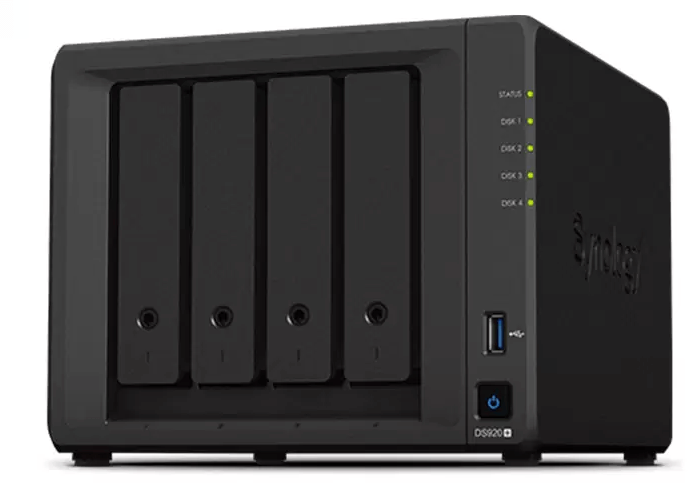Want to add an external hard drive to Synology NAS? Our guide walks you through the simple steps to connect an external hard drive to NAS, increasing storage and improving your data management.

Quick Search:
You're probably thinking about external hard drives and Network Attached Storage (NAS) if you've ever run out of storage or needed a better way to organize and backup your data. Even though they each provide useful storage options, merging them can improve your data management even further. However, how precisely may an external hard drive be connected to a network area network? Why would you want to, anyway?
We'll explain the steps, go over the advantages, and address typical problems in this tutorial. You'll know exactly how to incorporate an external hard drive into your NAS configuration at the end.

An external hard drive is a portable storage device that you can connect to your computer or other devices via USB, Thunderbolt, or other connections. It’s like having an extra filing cabinet that you can carry around, keeping your important files safe and accessible on the go.
External hard drives function similarly to internal hard drives but are housed in an external casing. Inside, they use magnetic disks (HDD) or solid-state drives (SSD) to store data. When connected to a device, the external drive appears as an additional drive on your computer, allowing you to store, retrieve, and manage files with ease.
>> Look here if you want to:

NAS stands for Network Attached Storage, which is a dedicated storage device connected to your home or office network. Unlike an external hard drive, which connects directly to a single device, a NAS acts as a central hub that allows multiple devices to access the stored data over a local network or the internet.
NAS operates like a server. It’s plugged into your router or network switch, and once connected, any device on the same network (like your computer, tablet, or smartphone) can access the files stored on it. NAS devices often come with their own operating systems and software to help manage files, permissions, and data security.
>> Look here if you want to:
Connecting an external hard drive to your NAS can elevate your storage capacity and improve your data management capabilities.
Increased Storage Capacity
In addition to adding more space, adding an external hard drive to your NAS increases the network's overall capacity. Even the greatest data sets can be stored on the extra storage, whether they are backups, images, or movies.
Redundancy and Backup
Your data is protected when you use an external hard drive as a backup for your NAS. The external drive acts as an extra line of defense in case your NAS experiences a problem (hardware failure, theft, etc.).
Enhanced Data Management
An external hard drive connected to a NAS can be used for specific data types – for instance, you could dedicate the external drive to media storage, while your NAS handles documents and backups. This makes file organization smoother and more efficient.
Ready to get started? Let’s walk through the process step-by-step.
Requirements for Connecting
Before you begin, ensure you have the following:
It might be necessary to partition or format your external hard disk before attaching it to the NAS. To make the drive readable by the NAS, format it using your computer's disk management application (typically in NTFS or exFAT format).
Make sure your NAS is turned on and linked to your network. Before they can be utilized efficiently, some NAS devices might need firmware updates, so look for and install any that are available.
Connect the external hard disk to the NAS's eSATA or USB connector. Verify that the drive is powered on and that the connection is secure (if necessary).
Once the drive is connected, log into the NAS management interface (usually accessible via a web browser). From here, you should be able to find your external hard drive and set it up for use – this may include assigning it as a storage volume or configuring it for automatic backups.
An easy yet effective method to improve your data management, backup, and storage is to connect an external hard drive to a network area network (NAS). You may quickly increase your storage space, protect your data, and expedite file access throughout your network with the correct configuration.
You can maximize the functionality of both devices and easily integrate your external hard drive into your NAS system by following the instructions in this guide.
When using NAS to store your pictures and videos, you will inevitably encounter the need to move other data (such as Google Drive, iCloud Drive, iCloud Photos) to the NAS device. At this time, you can use the professional cloud file manager - MultCloud to move your data directly and quickly without frequently switching accounts.
MultCloud mainly provides 4 core cloud-to-cloud data migration functions, you can choose according to your needs: